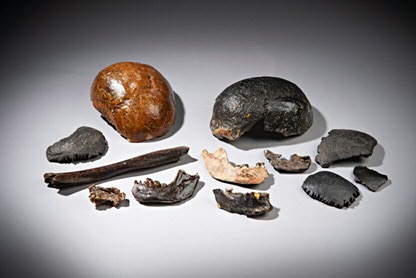Human populations

Doggerland between 20,000 and 7,000 years ago was inhabited by anatomically modern humans. These were nomadic hunter-gatherers who, most of the time, lived in smaller groups composed of a few families. Clearly, to ensure healthy offspring, social bonds and marriage was needed, requiring frequent interaction. This will have led to a specific genetic profile, which is rooted in long-term historical connections within and between larger populations, with traces of admixture with Neanderthals. As yet, we know very little about the biology of these people, how they were related, what they looked like, what they ate, and how healthy they were.
Close to 100 humans remains will be studied to get better insight in just these aspects of human existence. Ancient DNA extracted from the bones will deepen our knowledge about inter-human relationships. Combined with data on morphological characteristics of skeletal parts, this will enable us to grasp how these hunter-gatherer populations evolved, and to what extent these may have shaped micro-evolutionary processes. In addition, the isotopic composition of the bones provide insight into the diet of people. In relation to information on bone pathologies, this will also enable us to say something about health, aspects which might have changed as the environment transformed due to climate and sea-level change.
| Last modified: | 31 May 2021 11.17 a.m. |
